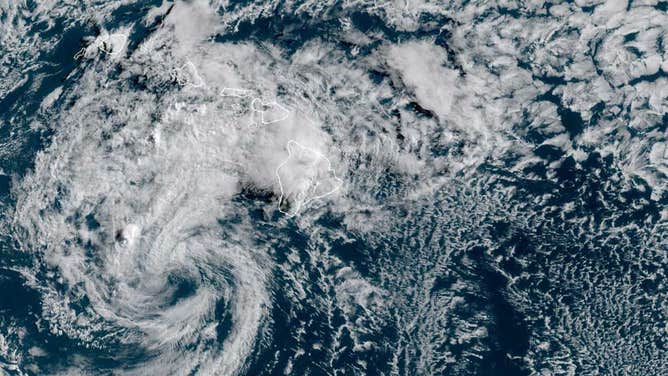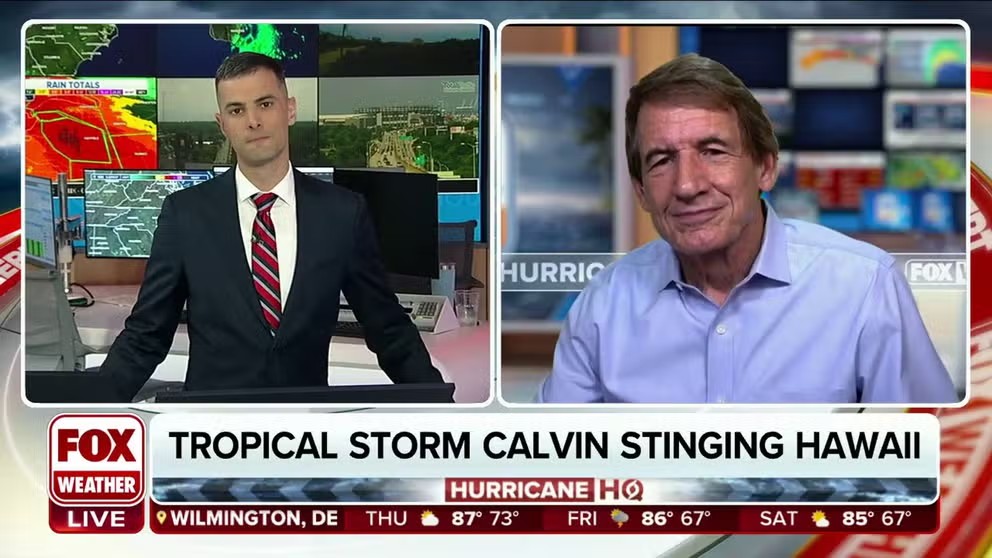Tropical Storm Calvin produces heavy rain, gusty winds for Hawaiian Islands
Calvin was the first tropical cyclone to force alerts to be issued for Hawaii since July 2020, when Hurricane Douglas prompted alerts as it grazed the state to the north.
Tracking the tropics: Calvin weakens while Don strengthens
FOX Weather Hurricane Specialist Bryan Norcross is tracking the remnants of Calvin in the Central Pacific and Tropical Storm Don in the North Atlantic.
HILO, Hawaii – Tropical Storm Calvin weakened into a post-tropical low as it moved away from the Hawaiian Island chain on Wednesday but not before producing rough surf and heavy rainfall.
The once-tropical storm had sustained winds of around 45 mph when it made its closest approach to the Big Island.
The National Hurricane Center warned swells generated by Calvin will continue to affect the islands with higher-than-normal surf, especially on south-facing beaches.
A Tropical Storm Warning and Flood Watch were issued ahead of imparts from the tropical storm but many of the alerts have been allowed to expire.
Calvin was the first cyclone to force the issuance of either a Tropical Storm Warning or Hurricane Warning for Hawaii since July 2020, when Hurricane Douglas prompted alerts as it grazed the state.
HOW ARE HURRICANES RATED? THE SAFFIR-SIMPSON HURRICANE WIND SCALE EXPLAINED

Tropical Storm Calvin as seen from NOAA's GOES West satellite on July 19, 2023. (Image: NOAA/STARR)
(NOAA)
Calvin became the strongest hurricane of season in Eastern Pacific
Tropical Depression Three-E originally formed several hundred miles off the coast of Mexico on July 11 and became a Category 3 hurricane three days later over the open Pacific.
At its peak intensity, the NHC reported maximum sustained winds of 125 mph and a central pressure of 955 millibars.
Hurricane Calvin earned the distinction of becoming the strongest tropical cyclone of the year so far in the eastern Pacific.
Due to a patch of cooler water between Hawaii and Mexico the cyclone weakened significantly before making its closest approach to Hawaii.
FLORIDA BEACH EMERGES AS DEADLIEST IN U.S. AFTER RIP CURRENTS CLAIM LIVES
Calvin joins used list of names in 2023
The 2023 Eastern Pacific hurricane season got off to a slow start, with the first named storm not forming until June 27.
Tropical Storm Adrian rapidly strengthened into the season’s first hurricane during the next 24 hours.
Adrian peaked at Category 2 strength with maximum sustained winds around 110 mph but stayed several hundred miles off the coast of mainland Mexico.
Less than a week after the formation of Adrian, Tropical Storm Beatriz was designated by the NHC, but it had a different future than its predecessor.
Beatriz produced flooding rain and hurricane-force winds for some coastal communities in Mexico before dissipating.
Since neither tropical cyclone caused significant damage, the names are expected to be reused when the current season’s list is used again in 2029.
The World Meteorological Organization has six lists of 24 names that rotate and are used once every six years in the Eastern Pacific.
